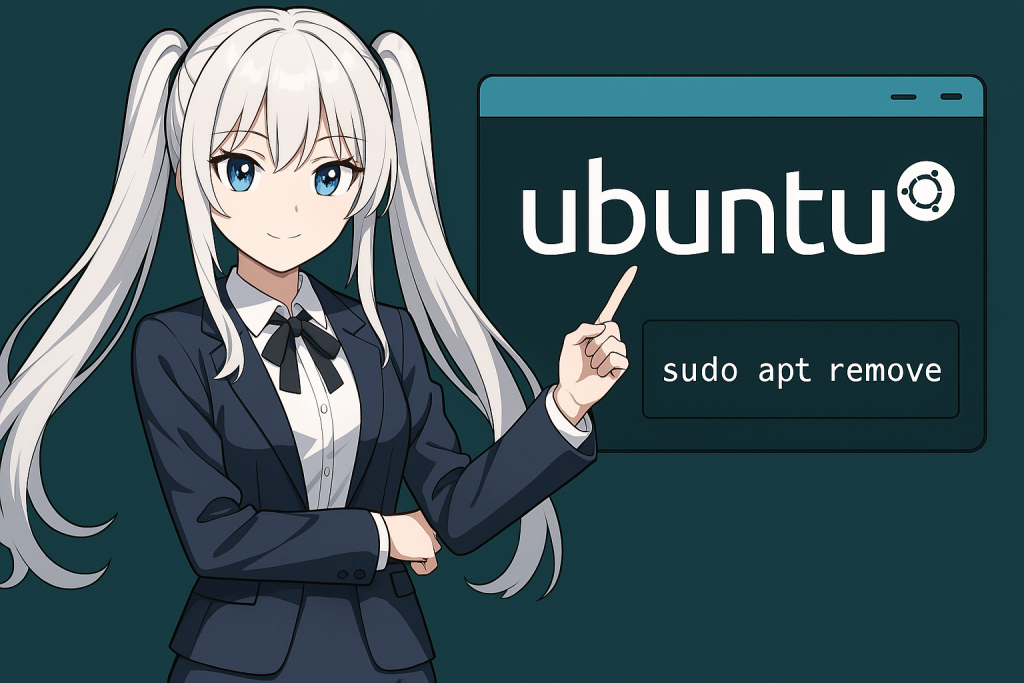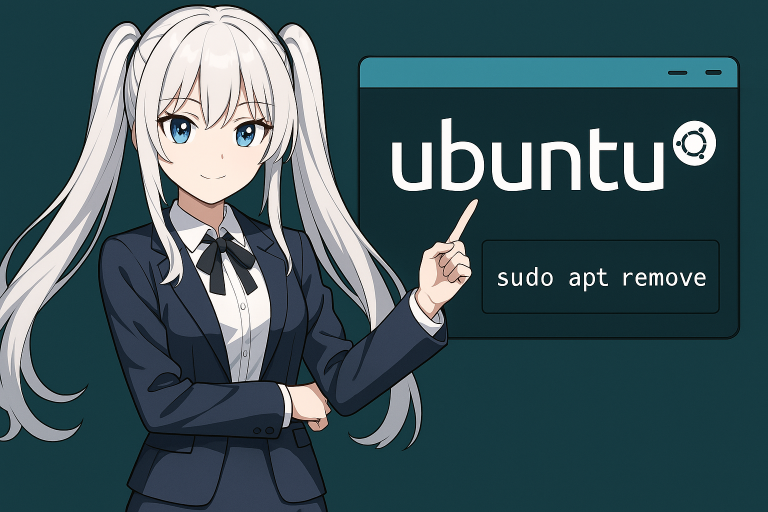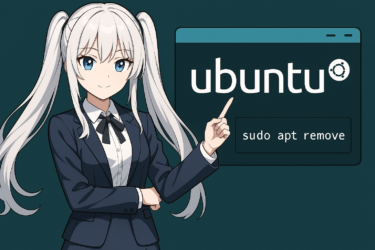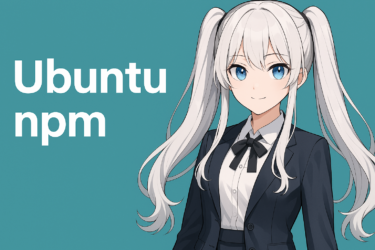sudo apt update- If you’re using an old version of Ubuntu, the repository may be outdated. Consider upgrading to a newer release.
- 1 7. Frequently Asked Questions (FAQ)
- 2 7. Frequently Asked Questions (FAQ)
- 2.1 Q1. What’s the difference between apt remove and apt purge?
- 2.2 Q2. What should I watch out for when using rm -rf?
- 2.3 Q3. How do I remove leftover dependency packages?
- 2.4 Q4. How do I fix the “Unable to locate package” error?
- 2.5 Q5. How can I tell if an app was installed with Snap?
- 2.6 If you’re unsure, use GUI tools
- 2.7 Check system status after uninstalling
- 3 7. Frequently Asked Questions (FAQ)
- 3.1 Q1. What’s the difference between apt remove and apt purge?
- 3.2 Q2. What should I watch out for when using rm -rf?
- 3.3 Q3. How do I remove leftover dependency packages?
- 3.4 Q4. How do I fix the “Unable to locate package” error?
- 3.5 Q5. How can I tell if an app was installed with Snap?
- 3.6 If you’re unsure, use GUI tools
- 3.7 Check system status after uninstalling
- 4 7. Frequently Asked Questions (FAQ)
- 4.1 Q1. What’s the difference between apt remove and apt purge?
- 4.2 Q2. What should I watch out for when using rm -rf?
- 4.3 Q3. How do I remove leftover dependency packages?
- 4.4 Q4. How do I fix the “Unable to locate package” error?
- 4.5 Q5. How can I tell if an app was installed with Snap?
- 4.6 If you’re unsure, use GUI tools
- 4.7 Check system status after uninstalling
- 5 7. Frequently Asked Questions (FAQ)
- 6 6. Cautions and Best Practices
- 7 7. Frequently Asked Questions (FAQ)
- 8 6. Cautions and Best Practices
- 9 7. Frequently Asked Questions (FAQ)
- 10 1. Introduction
- 11 2. Basic Uninstall Commands
- 12 3. Cleaning Up Dependencies
- 13 4. Uninstalling with Other Package Managers
- 14 5. Deleting Directories and Files
- 15 6. Cautions and Best Practices
- 16 7. Frequently Asked Questions (FAQ)
Q5. How can I tell if an app was installed with Snap?
A.
Run the following command to list all installed Snap packages:
snap listApps shown in this list were installed via Snap, not APT. To uninstall them, use:
sudo snap remove package-name- Check for typos in the package name.
- Update your package list using:
sudo apt update- If you’re using an old version of Ubuntu, the repository may be outdated. Consider upgrading to a newer release.
Q5. How can I tell if an app was installed with Snap?
A.
Run the following command to list all installed Snap packages:
snap listApps shown in this list were installed via Snap, not APT. To uninstall them, use:
sudo snap remove package-name- Check available disk space:
df -h7. Frequently Asked Questions (FAQ)
At first glance, uninstalling software in Ubuntu may seem straightforward. But during the process, many users—especially beginners—find themselves asking questions like: “Is this really the right command?” or “What should I do if something goes wrong?”
In this section, we’ve collected some of the most common questions along with clear answers. These tips will be helpful for both beginners and intermediate users.
Q1. What’s the difference between apt remove and apt purge?
A.apt remove only deletes the main package, but leaves behind its configuration files. In contrast, apt purge removes both the package and its associated configuration files completely.
If you plan to reinstall the software and want to keep your old settings, use remove. If you want a clean slate, use purge.
Q2. What should I watch out for when using rm -rf?
A.rm -rf is a powerful and dangerous command that deletes files and directories without any confirmation. If misused, it can permanently delete important system files.
Before running it, always use ls to double-check what you’re deleting. Avoid using sudo unless absolutely necessary, and be extra cautious with paths.
Q3. How do I remove leftover dependency packages?
A.
After uninstalling software using APT, you can clean up any unused dependencies with the following command:
sudo apt autoremoveThis command safely removes packages that were installed automatically as dependencies but are no longer needed.
Q4. How do I fix the “Unable to locate package” error?
A.
This error means APT can’t find the package you’re trying to install or remove. Try the following steps to resolve it:
- Check for typos in the package name.
- Update your package list using:
sudo apt update- If you’re using an old version of Ubuntu, the repository may be outdated. Consider upgrading to a newer release.
Q5. How can I tell if an app was installed with Snap?
A.
Run the following command to list all installed Snap packages:
snap listApps shown in this list were installed via Snap, not APT. To uninstall them, use:
sudo snap remove package-name- Clean up unneeded packages:
sudo apt autoremove- Check available disk space:
df -h7. Frequently Asked Questions (FAQ)
At first glance, uninstalling software in Ubuntu may seem straightforward. But during the process, many users—especially beginners—find themselves asking questions like: “Is this really the right command?” or “What should I do if something goes wrong?”
In this section, we’ve collected some of the most common questions along with clear answers. These tips will be helpful for both beginners and intermediate users.
Q1. What’s the difference between apt remove and apt purge?
A.apt remove only deletes the main package, but leaves behind its configuration files. In contrast, apt purge removes both the package and its associated configuration files completely.
If you plan to reinstall the software and want to keep your old settings, use remove. If you want a clean slate, use purge.
Q2. What should I watch out for when using rm -rf?
A.rm -rf is a powerful and dangerous command that deletes files and directories without any confirmation. If misused, it can permanently delete important system files.
Before running it, always use ls to double-check what you’re deleting. Avoid using sudo unless absolutely necessary, and be extra cautious with paths.
Q3. How do I remove leftover dependency packages?
A.
After uninstalling software using APT, you can clean up any unused dependencies with the following command:
sudo apt autoremoveThis command safely removes packages that were installed automatically as dependencies but are no longer needed.
Q4. How do I fix the “Unable to locate package” error?
A.
This error means APT can’t find the package you’re trying to install or remove. Try the following steps to resolve it:
- Check for typos in the package name.
- Update your package list using:
sudo apt update- If you’re using an old version of Ubuntu, the repository may be outdated. Consider upgrading to a newer release.
Q5. How can I tell if an app was installed with Snap?
A.
Run the following command to list all installed Snap packages:
snap listApps shown in this list were installed via Snap, not APT. To uninstall them, use:
sudo snap remove package-name- Preview packages that would be removed by APT:
sudo apt remove package-name --dry-runIf you’re unsure, use GUI tools
If you’re not comfortable using the terminal, Ubuntu’s GUI-based tools like the Software Center can be helpful. They provide a visual way to confirm what will be removed and can reduce the risk of errors like mistyped package names.
Check system status after uninstalling
Once you’ve completed an uninstall, it’s a good idea to check for leftover dependencies and ensure your system is clean and has enough free space.
- Clean up unneeded packages:
sudo apt autoremove- Check available disk space:
df -h7. Frequently Asked Questions (FAQ)
At first glance, uninstalling software in Ubuntu may seem straightforward. But during the process, many users—especially beginners—find themselves asking questions like: “Is this really the right command?” or “What should I do if something goes wrong?”
In this section, we’ve collected some of the most common questions along with clear answers. These tips will be helpful for both beginners and intermediate users.
Q1. What’s the difference between apt remove and apt purge?
A.apt remove only deletes the main package, but leaves behind its configuration files. In contrast, apt purge removes both the package and its associated configuration files completely.
If you plan to reinstall the software and want to keep your old settings, use remove. If you want a clean slate, use purge.
Q2. What should I watch out for when using rm -rf?
A.rm -rf is a powerful and dangerous command that deletes files and directories without any confirmation. If misused, it can permanently delete important system files.
Before running it, always use ls to double-check what you’re deleting. Avoid using sudo unless absolutely necessary, and be extra cautious with paths.
Q3. How do I remove leftover dependency packages?
A.
After uninstalling software using APT, you can clean up any unused dependencies with the following command:
sudo apt autoremoveThis command safely removes packages that were installed automatically as dependencies but are no longer needed.
Q4. How do I fix the “Unable to locate package” error?
A.
This error means APT can’t find the package you’re trying to install or remove. Try the following steps to resolve it:
- Check for typos in the package name.
- Update your package list using:
sudo apt update- If you’re using an old version of Ubuntu, the repository may be outdated. Consider upgrading to a newer release.
Q5. How can I tell if an app was installed with Snap?
A.
Run the following command to list all installed Snap packages:
snap listApps shown in this list were installed via Snap, not APT. To uninstall them, use:
sudo snap remove package-name- Check if a file exists:
ls -l filename- Preview packages that would be removed by APT:
sudo apt remove package-name --dry-runIf you’re unsure, use GUI tools
If you’re not comfortable using the terminal, Ubuntu’s GUI-based tools like the Software Center can be helpful. They provide a visual way to confirm what will be removed and can reduce the risk of errors like mistyped package names.
Check system status after uninstalling
Once you’ve completed an uninstall, it’s a good idea to check for leftover dependencies and ensure your system is clean and has enough free space.
- Clean up unneeded packages:
sudo apt autoremove- Check available disk space:
df -h7. Frequently Asked Questions (FAQ)
At first glance, uninstalling software in Ubuntu may seem straightforward. But during the process, many users—especially beginners—find themselves asking questions like: “Is this really the right command?” or “What should I do if something goes wrong?”
In this section, we’ve collected some of the most common questions along with clear answers. These tips will be helpful for both beginners and intermediate users.
Q1. What’s the difference between apt remove and apt purge?
A.apt remove only deletes the main package, but leaves behind its configuration files. In contrast, apt purge removes both the package and its associated configuration files completely.
If you plan to reinstall the software and want to keep your old settings, use remove. If you want a clean slate, use purge.
Q2. What should I watch out for when using rm -rf?
A.rm -rf is a powerful and dangerous command that deletes files and directories without any confirmation. If misused, it can permanently delete important system files.
Before running it, always use ls to double-check what you’re deleting. Avoid using sudo unless absolutely necessary, and be extra cautious with paths.
Q3. How do I remove leftover dependency packages?
A.
After uninstalling software using APT, you can clean up any unused dependencies with the following command:
sudo apt autoremoveThis command safely removes packages that were installed automatically as dependencies but are no longer needed.
Q4. How do I fix the “Unable to locate package” error?
A.
This error means APT can’t find the package you’re trying to install or remove. Try the following steps to resolve it:
- Check for typos in the package name.
- Update your package list using:
sudo apt update- If you’re using an old version of Ubuntu, the repository may be outdated. Consider upgrading to a newer release.
Q5. How can I tell if an app was installed with Snap?
A.
Run the following command to list all installed Snap packages:
snap listApps shown in this list were installed via Snap, not APT. To uninstall them, use:
sudo snap remove package-name- Check package status:
dpkg -l | grep package-name- Check if a file exists:
ls -l filename- Preview packages that would be removed by APT:
sudo apt remove package-name --dry-runIf you’re unsure, use GUI tools
If you’re not comfortable using the terminal, Ubuntu’s GUI-based tools like the Software Center can be helpful. They provide a visual way to confirm what will be removed and can reduce the risk of errors like mistyped package names.
Check system status after uninstalling
Once you’ve completed an uninstall, it’s a good idea to check for leftover dependencies and ensure your system is clean and has enough free space.
- Clean up unneeded packages:
sudo apt autoremove- Check available disk space:
df -h7. Frequently Asked Questions (FAQ)
At first glance, uninstalling software in Ubuntu may seem straightforward. But during the process, many users—especially beginners—find themselves asking questions like: “Is this really the right command?” or “What should I do if something goes wrong?”
In this section, we’ve collected some of the most common questions along with clear answers. These tips will be helpful for both beginners and intermediate users.
Q1. What’s the difference between apt remove and apt purge?
A.apt remove only deletes the main package, but leaves behind its configuration files. In contrast, apt purge removes both the package and its associated configuration files completely.
If you plan to reinstall the software and want to keep your old settings, use remove. If you want a clean slate, use purge.
Q2. What should I watch out for when using rm -rf?
A.rm -rf is a powerful and dangerous command that deletes files and directories without any confirmation. If misused, it can permanently delete important system files.
Before running it, always use ls to double-check what you’re deleting. Avoid using sudo unless absolutely necessary, and be extra cautious with paths.
Q3. How do I remove leftover dependency packages?
A.
After uninstalling software using APT, you can clean up any unused dependencies with the following command:
sudo apt autoremoveThis command safely removes packages that were installed automatically as dependencies but are no longer needed.
Q4. How do I fix the “Unable to locate package” error?
A.
This error means APT can’t find the package you’re trying to install or remove. Try the following steps to resolve it:
- Check for typos in the package name.
- Update your package list using:
sudo apt update- If you’re using an old version of Ubuntu, the repository may be outdated. Consider upgrading to a newer release.
Q5. How can I tell if an app was installed with Snap?
A.
Run the following command to list all installed Snap packages:
snap listApps shown in this list were installed via Snap, not APT. To uninstall them, use:
sudo snap remove package-name- Use
trash-clias a safer alternative (recommended for beginners):
sudo apt install trash-cli
trash-put filenameThis will move the file to the trash instead of permanently deleting it, allowing you to recover it later if needed.
6. Cautions and Best Practices
Uninstalling software on Ubuntu is both powerful and convenient. However, it often requires careful operation, especially for users who are not yet familiar with command-line tools. A small mistake during removal can lead to serious system issues.
This section outlines key precautions and best practices to help you remove software and files both safely and efficiently.
Back up your data before uninstalling
Even if you’re confident the data is no longer needed, it’s a good idea to create a backup just in case. Once something is deleted, recovering it may be difficult or impossible—especially config files or database files.
Here are some common backup methods:
- Copy files to another folder using the
cpcommand - Move files to an external drive or cloud storage
- Use
rsyncfor incremental or synchronized backups
Be cautious with the use of sudo
The sudo command gives administrator-level privileges. If used incorrectly—especially with destructive commands like rm -rf—the consequences can be severe.
Best practices:
- Always double-check the full command before pressing Enter
- If the command supports it, use a
--dry-runoption first to preview the result - For complex operations, consider creating a script and reviewing it carefully before execution
Confirm what you’re about to delete
To avoid accidentally removing important packages or files, always verify the target before deletion.
- Check package status:
dpkg -l | grep package-name- Check if a file exists:
ls -l filename- Preview packages that would be removed by APT:
sudo apt remove package-name --dry-runIf you’re unsure, use GUI tools
If you’re not comfortable using the terminal, Ubuntu’s GUI-based tools like the Software Center can be helpful. They provide a visual way to confirm what will be removed and can reduce the risk of errors like mistyped package names.
Check system status after uninstalling
Once you’ve completed an uninstall, it’s a good idea to check for leftover dependencies and ensure your system is clean and has enough free space.
- Clean up unneeded packages:
sudo apt autoremove- Check available disk space:
df -h7. Frequently Asked Questions (FAQ)
At first glance, uninstalling software in Ubuntu may seem straightforward. But during the process, many users—especially beginners—find themselves asking questions like: “Is this really the right command?” or “What should I do if something goes wrong?”
In this section, we’ve collected some of the most common questions along with clear answers. These tips will be helpful for both beginners and intermediate users.
Q1. What’s the difference between apt remove and apt purge?
A.apt remove only deletes the main package, but leaves behind its configuration files. In contrast, apt purge removes both the package and its associated configuration files completely.
If you plan to reinstall the software and want to keep your old settings, use remove. If you want a clean slate, use purge.
Q2. What should I watch out for when using rm -rf?
A.rm -rf is a powerful and dangerous command that deletes files and directories without any confirmation. If misused, it can permanently delete important system files.
Before running it, always use ls to double-check what you’re deleting. Avoid using sudo unless absolutely necessary, and be extra cautious with paths.
Q3. How do I remove leftover dependency packages?
A.
After uninstalling software using APT, you can clean up any unused dependencies with the following command:
sudo apt autoremoveThis command safely removes packages that were installed automatically as dependencies but are no longer needed.
Q4. How do I fix the “Unable to locate package” error?
A.
This error means APT can’t find the package you’re trying to install or remove. Try the following steps to resolve it:
- Check for typos in the package name.
- Update your package list using:
sudo apt update- If you’re using an old version of Ubuntu, the repository may be outdated. Consider upgrading to a newer release.
Q5. How can I tell if an app was installed with Snap?
A.
Run the following command to list all installed Snap packages:
snap listApps shown in this list were installed via Snap, not APT. To uninstall them, use:
sudo snap remove package-name- Check contents before deleting:
ls directory-name- Use
trash-clias a safer alternative (recommended for beginners):
sudo apt install trash-cli
trash-put filenameThis will move the file to the trash instead of permanently deleting it, allowing you to recover it later if needed.
6. Cautions and Best Practices
Uninstalling software on Ubuntu is both powerful and convenient. However, it often requires careful operation, especially for users who are not yet familiar with command-line tools. A small mistake during removal can lead to serious system issues.
This section outlines key precautions and best practices to help you remove software and files both safely and efficiently.
Back up your data before uninstalling
Even if you’re confident the data is no longer needed, it’s a good idea to create a backup just in case. Once something is deleted, recovering it may be difficult or impossible—especially config files or database files.
Here are some common backup methods:
- Copy files to another folder using the
cpcommand - Move files to an external drive or cloud storage
- Use
rsyncfor incremental or synchronized backups
Be cautious with the use of sudo
The sudo command gives administrator-level privileges. If used incorrectly—especially with destructive commands like rm -rf—the consequences can be severe.
Best practices:
- Always double-check the full command before pressing Enter
- If the command supports it, use a
--dry-runoption first to preview the result - For complex operations, consider creating a script and reviewing it carefully before execution
Confirm what you’re about to delete
To avoid accidentally removing important packages or files, always verify the target before deletion.
- Check package status:
dpkg -l | grep package-name- Check if a file exists:
ls -l filename- Preview packages that would be removed by APT:
sudo apt remove package-name --dry-runIf you’re unsure, use GUI tools
If you’re not comfortable using the terminal, Ubuntu’s GUI-based tools like the Software Center can be helpful. They provide a visual way to confirm what will be removed and can reduce the risk of errors like mistyped package names.
Check system status after uninstalling
Once you’ve completed an uninstall, it’s a good idea to check for leftover dependencies and ensure your system is clean and has enough free space.
- Clean up unneeded packages:
sudo apt autoremove- Check available disk space:
df -h7. Frequently Asked Questions (FAQ)
At first glance, uninstalling software in Ubuntu may seem straightforward. But during the process, many users—especially beginners—find themselves asking questions like: “Is this really the right command?” or “What should I do if something goes wrong?”
In this section, we’ve collected some of the most common questions along with clear answers. These tips will be helpful for both beginners and intermediate users.
Q1. What’s the difference between apt remove and apt purge?
A.apt remove only deletes the main package, but leaves behind its configuration files. In contrast, apt purge removes both the package and its associated configuration files completely.
If you plan to reinstall the software and want to keep your old settings, use remove. If you want a clean slate, use purge.
Q2. What should I watch out for when using rm -rf?
A.rm -rf is a powerful and dangerous command that deletes files and directories without any confirmation. If misused, it can permanently delete important system files.
Before running it, always use ls to double-check what you’re deleting. Avoid using sudo unless absolutely necessary, and be extra cautious with paths.
Q3. How do I remove leftover dependency packages?
A.
After uninstalling software using APT, you can clean up any unused dependencies with the following command:
sudo apt autoremoveThis command safely removes packages that were installed automatically as dependencies but are no longer needed.
Q4. How do I fix the “Unable to locate package” error?
A.
This error means APT can’t find the package you’re trying to install or remove. Try the following steps to resolve it:
- Check for typos in the package name.
- Update your package list using:
sudo apt update- If you’re using an old version of Ubuntu, the repository may be outdated. Consider upgrading to a newer release.
Q5. How can I tell if an app was installed with Snap?
A.
Run the following command to list all installed Snap packages:
snap listApps shown in this list were installed via Snap, not APT. To uninstall them, use:
sudo snap remove package-name1. Introduction
When using Ubuntu, there will inevitably come a time when you want to remove software or packages that are no longer needed. This is especially true when you’re trying to streamline your system or clean up tools you installed for testing purposes. In such cases, understanding the proper use of “uninstall commands” is essential.
Ubuntu is a Debian-based Linux distribution, and software packages are primarily managed using APT (Advanced Package Tool). While command-line operations may seem intimidating at first, mastering the basics will enable you to manage software more efficiently.
This article will explain the major methods for uninstalling software on Ubuntu, organized by command type. We’ll cover apt remove, apt purge, dpkg, snap, and even file deletion using rm -rf. The explanations are designed to be beginner-friendly, so feel free to read on even if you’re new to Linux.
Note that using commands to remove software can come with some risks. For instance, accidentally deleting critical system packages can cause malfunctions or require a complete reinstall. To avoid such issues, this article also covers safe and effective ways to uninstall software.
In the next section, we’ll dive into the most commonly used uninstall commands: apt remove and apt purge.
2. Basic Uninstall Commands
The most common way to remove software in Ubuntu is by using APT (Advanced Package Tool). In this section, we’ll focus on two essential commands: apt remove and apt purge. Both are used to uninstall software, but they serve slightly different purposes and have different effects.
apt remove: Removes the package itself
The apt remove command deletes the main package, but leaves configuration files behind. This means if you reinstall the software later, your previous settings may still be applied automatically.
Example usage:
sudo apt remove package-nameExample:
sudo apt remove gimpThis command removes the image editing software “GIMP” but leaves its configuration files on your system.
apt purge: Completely removes package including configs
On the other hand, the apt purge command removes not only the package itself but also its associated configuration files. This is useful when you want a completely fresh start or need to keep your system clean.
Example usage:
sudo apt purge package-nameExample:
sudo apt purge gimpThis command completely removes both the GIMP application and all of its configuration files, leaving almost no trace on your system.
When to use remove vs. purge
- Use
apt removeif you just want to temporarily uninstall the software but keep its settings. - Use
apt purgeif you want to completely erase it and remove any leftover configuration files.
Choosing the right command based on your situation can help keep your system clean and prevent future issues.
3. Cleaning Up Dependencies
After uninstalling software in Ubuntu, there may be leftover dependency packages that were installed alongside the main software. These unnecessary dependencies can take up disk space and clutter your system over time.
This is where the apt autoremove command becomes helpful. It automatically detects and removes packages that are no longer needed.
apt autoremove: Automatically removes unused packages
The apt autoremove command is used to clean up packages that were originally installed as dependencies but are no longer required. For example, when you uninstall an application, its related libraries might remain. Finding and deleting these manually can be tedious, but autoremove does it all in one go.
Example usage:
sudo apt autoremoveWhen you run this command, Ubuntu will list the unused packages and ask for confirmation before deleting them. This makes it safe to use without worrying about accidentally removing something important.
When and how to use it safely
- It’s a good idea to run
apt autoremoveright after usingapt removeorapt purge. - Since it uses automatic detection, always review the list of packages before confirming deletion.
Make it a habit to keep your system clean
To keep your Ubuntu system tidy, it’s a good habit to run sudo apt autoremove regularly—especially if you frequently install and remove software. This is particularly helpful in development environments where software changes often.
4. Uninstalling with Other Package Managers
In addition to APT, Ubuntu also supports other package management systems like dpkg and snap. Software installed through these tools may not be removable using standard apt commands, so you’ll need to use the appropriate method for each system.
This section explains how to uninstall software depending on the package manager used.
Uninstalling with dpkg
dpkg is a low-level package manager used for handling Debian packages (.deb) in Ubuntu. If you manually installed software using a .deb file, you can remove it with the dpkg -r or dpkg --remove command.
Example usage:
sudo dpkg -r package-nameExample:
sudo dpkg -r google-chrome-stableThis command removes the specified package, but configuration files may remain.
Important notes:
dpkgdoes not resolve dependencies, so you may need to runapt autoremoveafterward to clean up leftover packages.- You can check installed packages with
dpkg -l.
Removing Snap packages
In recent versions of Ubuntu, more applications are being distributed as Snap packages. These are managed separately from APT and must be removed using the snap remove command.
Example usage:
sudo snap remove package-nameExample:
sudo snap remove firefoxThis command removes the Snap version of Firefox from your system.
Check installed Snap packages:
snap listThis will display a list of all Snap packages currently installed on your system.
Tip: Free up space after removing Snap packages
Old Snap revisions can take up disk space even after uninstalling. You can limit how many revisions are kept using the command below:
sudo snap set system refresh.retain=2This setting keeps only the latest two versions of each Snap, helping to reduce unnecessary disk usage.

5. Deleting Directories and Files
In addition to uninstalling software or packages, there may be times when you want to manually delete unnecessary files or directories in Ubuntu. These might include leftover config files, temporary folders, or cache data.
This section explains how to use the basic Linux file deletion command rm, along with important precautions.
Deleting files: Basics of the rm command
The rm command (short for “remove”) is a fundamental command used to delete files. It’s powerful, but if used incorrectly, it can result in accidental data loss—so caution is key.
Example usage:
rm filenameExample:
rm test.txtThis command deletes the test.txt file located in the current directory.
Deleting directories: Using the -r option
To delete a directory, you need to use the -r (or --recursive) option, which allows you to remove the directory and all of its contents.
Example usage:
rm -r directory-nameExample:
rm -r old_logsThis command removes the old_logs directory along with all files and subdirectories inside it.
The dangers and uses of rm -rf
The rm -rf command is especially risky for Linux beginners and should be used with great care.
-r: Recursively deletes directories and contents-f: Forces deletion without asking for confirmation
Example usage:
sudo rm -rf /home/username/tmp/This command forcefully deletes the tmp directory and everything inside it without prompting. Be extremely careful with the target path—mistakes can break your entire system.
Absolutely do not run this command:
sudo rm -rf /This command will attempt to delete the entire root directory. It’s one of the most dangerous commands you can run—never try this, even as a test.
Safety tips when deleting files
- Check contents before deleting:
ls directory-name- Use
trash-clias a safer alternative (recommended for beginners):
sudo apt install trash-cli
trash-put filenameThis will move the file to the trash instead of permanently deleting it, allowing you to recover it later if needed.
6. Cautions and Best Practices
Uninstalling software on Ubuntu is both powerful and convenient. However, it often requires careful operation, especially for users who are not yet familiar with command-line tools. A small mistake during removal can lead to serious system issues.
This section outlines key precautions and best practices to help you remove software and files both safely and efficiently.
Back up your data before uninstalling
Even if you’re confident the data is no longer needed, it’s a good idea to create a backup just in case. Once something is deleted, recovering it may be difficult or impossible—especially config files or database files.
Here are some common backup methods:
- Copy files to another folder using the
cpcommand - Move files to an external drive or cloud storage
- Use
rsyncfor incremental or synchronized backups
Be cautious with the use of sudo
The sudo command gives administrator-level privileges. If used incorrectly—especially with destructive commands like rm -rf—the consequences can be severe.
Best practices:
- Always double-check the full command before pressing Enter
- If the command supports it, use a
--dry-runoption first to preview the result - For complex operations, consider creating a script and reviewing it carefully before execution
Confirm what you’re about to delete
To avoid accidentally removing important packages or files, always verify the target before deletion.
- Check package status:
dpkg -l | grep package-name- Check if a file exists:
ls -l filename- Preview packages that would be removed by APT:
sudo apt remove package-name --dry-runIf you’re unsure, use GUI tools
If you’re not comfortable using the terminal, Ubuntu’s GUI-based tools like the Software Center can be helpful. They provide a visual way to confirm what will be removed and can reduce the risk of errors like mistyped package names.
Check system status after uninstalling
Once you’ve completed an uninstall, it’s a good idea to check for leftover dependencies and ensure your system is clean and has enough free space.
- Clean up unneeded packages:
sudo apt autoremove- Check available disk space:
df -h7. Frequently Asked Questions (FAQ)
At first glance, uninstalling software in Ubuntu may seem straightforward. But during the process, many users—especially beginners—find themselves asking questions like: “Is this really the right command?” or “What should I do if something goes wrong?”
In this section, we’ve collected some of the most common questions along with clear answers. These tips will be helpful for both beginners and intermediate users.
Q1. What’s the difference between apt remove and apt purge?
A.apt remove only deletes the main package, but leaves behind its configuration files. In contrast, apt purge removes both the package and its associated configuration files completely.
If you plan to reinstall the software and want to keep your old settings, use remove. If you want a clean slate, use purge.
Q2. What should I watch out for when using rm -rf?
A.rm -rf is a powerful and dangerous command that deletes files and directories without any confirmation. If misused, it can permanently delete important system files.
Before running it, always use ls to double-check what you’re deleting. Avoid using sudo unless absolutely necessary, and be extra cautious with paths.
Q3. How do I remove leftover dependency packages?
A.
After uninstalling software using APT, you can clean up any unused dependencies with the following command:
sudo apt autoremoveThis command safely removes packages that were installed automatically as dependencies but are no longer needed.
Q4. How do I fix the “Unable to locate package” error?
A.
This error means APT can’t find the package you’re trying to install or remove. Try the following steps to resolve it:
- Check for typos in the package name.
- Update your package list using:
sudo apt update- If you’re using an old version of Ubuntu, the repository may be outdated. Consider upgrading to a newer release.
Q5. How can I tell if an app was installed with Snap?
A.
Run the following command to list all installed Snap packages:
snap listApps shown in this list were installed via Snap, not APT. To uninstall them, use:
sudo snap remove package-name




